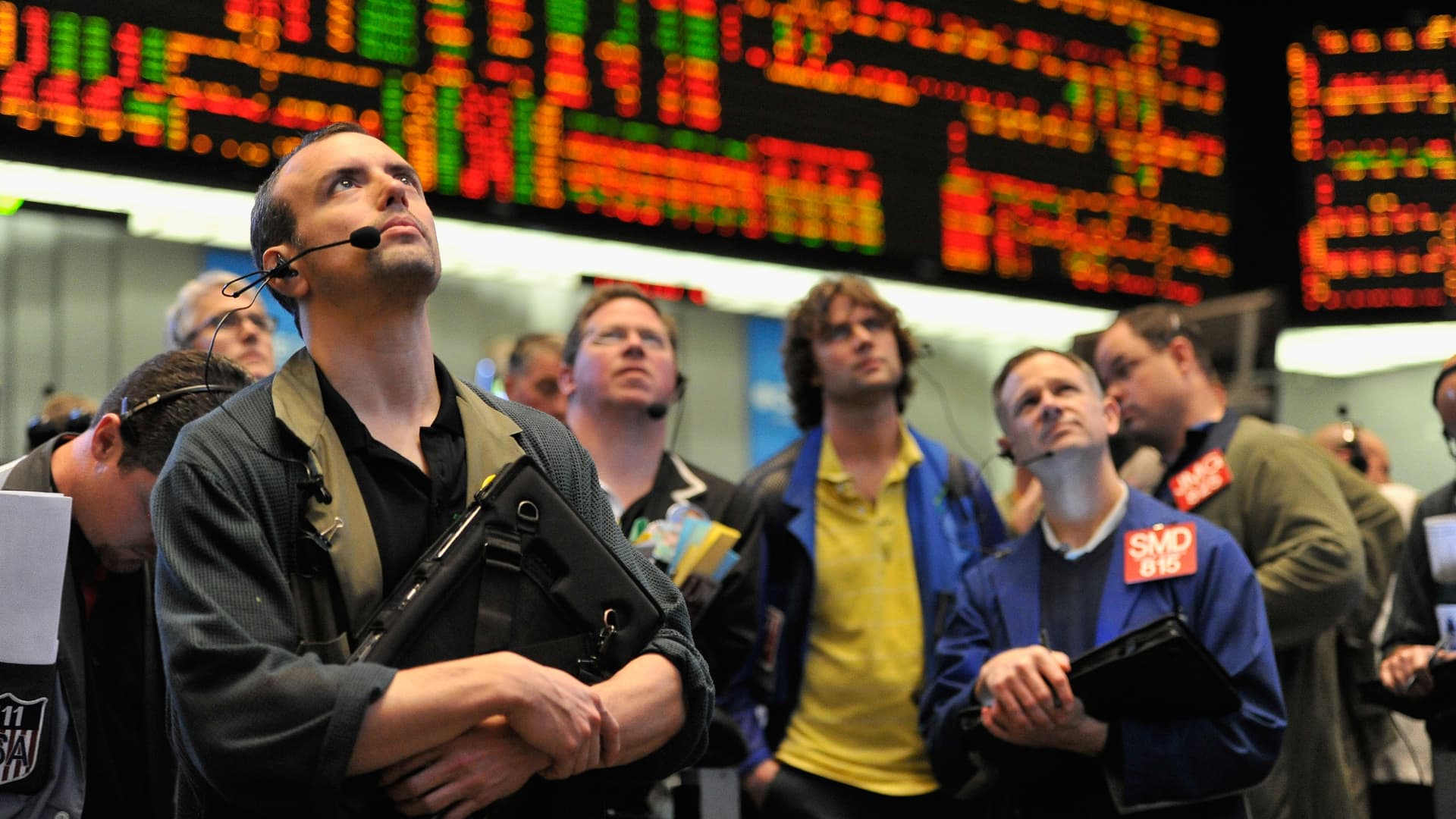
Investors looking for something to blame the recent stock market swoon need only to look at the bond market. The major U.S. stock averages logged their worst weekly performances of the year last week , with the S & P 500 losing 2.7%. The Dow Jones Industrial Average and Nasdaq Composite lost 3% and 3.3%, respectively. Those losses came as yields rose on hotter-than-expected inflation data, along with several Federal Reserve officials reiterating that rates could stay higher for longer if inflation persists. On Monday, the 2-year U.S. Treasury yield topped 4.8% and reached its highest point since 2007 before easing from those levels. “The recent reset by the equity market feels more of a byproduct of rates higher, rather than a [simple] reset out of overbought territory for stocks,” said JC O’Hara, chief market technician at Roth MKM, in a note to clients Sunday. “Overall, we believe this pullback has been orderly for stocks,” he added in his note. “However higher rates are becoming a large factor once again.” Given this recent trading action, market technicians are looking at rates as the key catalyst for stocks going forward. US2Y YTD mountain Two-year yield in 2023 BTIG chief market technician Jonathan Krinsky in a Sunday note that an inverse correlation between rates and equities remains intact. “While we don’t expect stocks and rates to be positively correlated forever, we’re not sure we’re at a decoupling point yet,” Krinsky said in a separate note to clients. That correlation was apparent Monday . The Dow, S & P 500 and Nasdaq rose for the day as Treasury yields dipped. Stocks or bonds: Who’s right? January ushered in an early rally for equities as investors looked to make up ground after finishing 2022 in the red. The S & P 500 had its best January since 2019 with a 6.2% gain, while the Nasdaq Composite recorded its best January since 2001 on a 10.7% advance. The Dow also ended the month up, adding 2.8%. But the enthusiasm faded in February, with the three major averages on pace to end the month lower. The S & P 500 and Nasdaq Composite have lost 2.2% and 0.9%, respectively, in February. The Dow has dropped 3.4% this month and is down year to date. The 2-year and 10-year bond yields have moved the opposite way, moving up in February after sliding in January. US10Y YTD mountain 10-year in 2023 This back and forth raises questions on who should investors listen to: the stock market, or bonds. Roth MKM’s O’Hara said the latest economic data can help inform that decision. The core personal consumption expenditures price index, a preferred gauge of inflation for the Federal Reserve, came in above economist expectations for January. That bolstered fears that the central bank may have to keep interest rates elevated for longer than some market observers hope to successfully tame inflation. “Inflation, as viewed through breakevens which affect government bond yields, has returned as the bogeyman the equity market thought was dead,” O’Hara said. Each of the three indexes closed Friday down 1% or more following the data . Moving inversely, the yields on 2-year and 1-year notes, along with those on 6-month and 3-month Treasury bills, jumped. And, while rates on longer-dated securities such as the 10-year note and 30-year bond have yet to overtake their fall 2022 highs, strategist John Roque thinks those levels could be broken soon. “Without the benefit of clairvoyance, I think we’ll soon start to hear the lamentations of consumers with respect to ’embedded higher prices’ because there’s almost no way on God’s green earth that the price you pay for a pizza will ever retreat to be considered a bargain again,” said Roque, head of technical strategy at 22V Research. The stock market has been viewed by market participants as expecting the Fed to successfully cool inflation while avoiding a recession, a scenario referred to as a “soft landing.” Fixed income markets have been viewed as more pessimistic on the future of the economy, but O’Hara said the recent sell-off in stocks could show that mindset is gaining popularity. “The equities markets have seemingly realized that the bond market could be right regarding higher inflation for longer,” O’Hara said. “The upward pressure on the terminal rate had an adverse effect on the stock market. Bonds continue to worship at the altar of inflation while equity markets are starting to question whether their soft-landing deity is indeed real.” ‘We’re buying bonds’ Some investors view the recent market action as a buying opportunity — not in stocks. Steve Eisman, an investor known for calling and benefitting from the 2007 housing crisis, said Monday that his favorite trade in the current investing landscape is short-term Treasurys on CNBC’s “Squawk Box.” He also said that he’s “laddering” Treasury bonds, which refers to the strategy of building a portfolio of bonds at different maturity lengths and then reinvesting as bonds begin the mature. “We’re buying bonds, especially Treasurys,” said Eisman, who is the senior portfolio manager at Neuberger Berman. “Just risk-free Treasuries at 4.8[%] is a nice place to be. Look, clients have different objectives. There’s no shame in putting some of your clients’ money in 4.8%.” — CNBC”s Yun Li and Michael Bloom contributed to this report.
